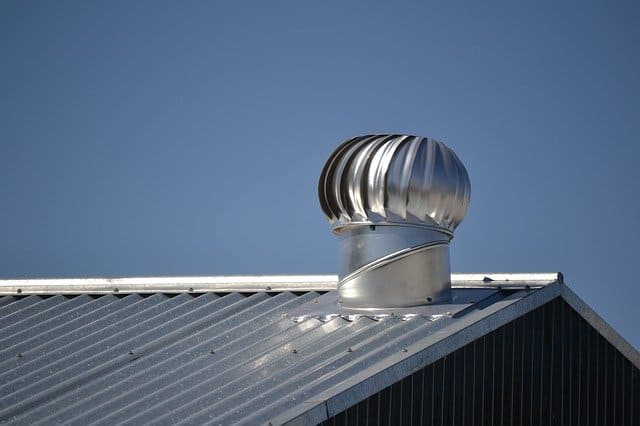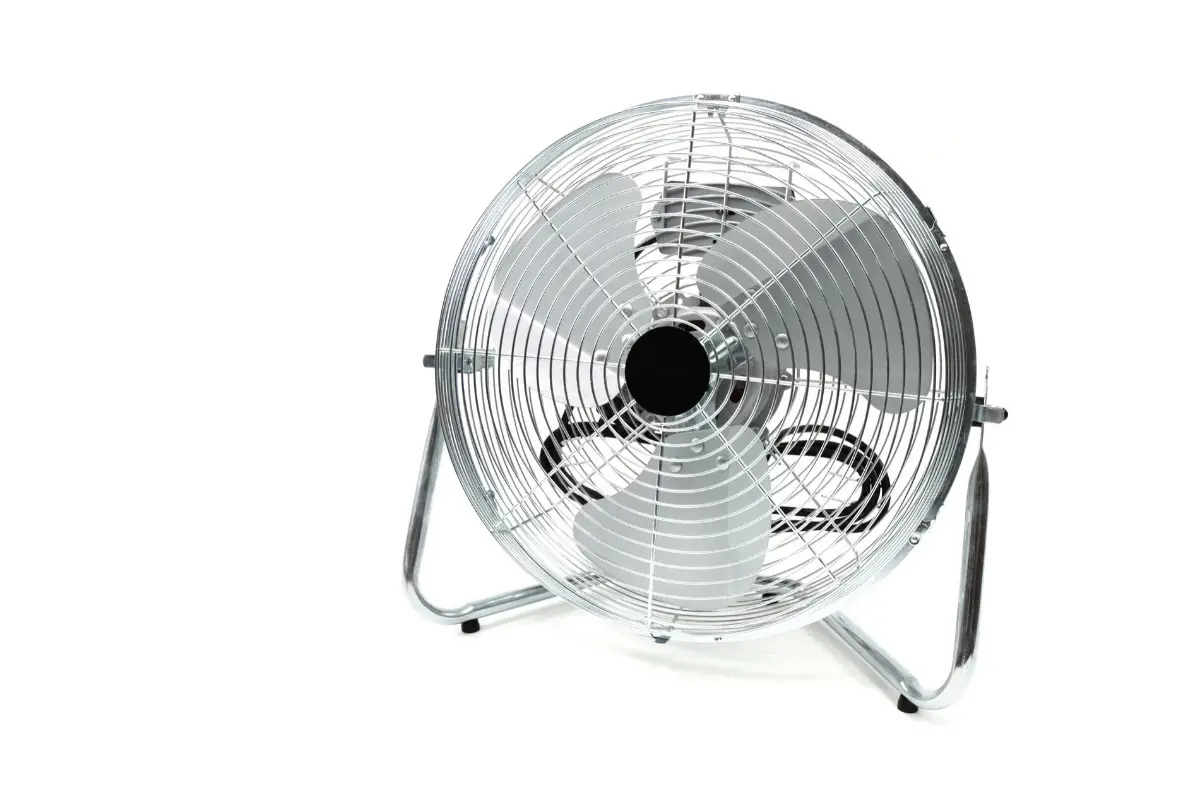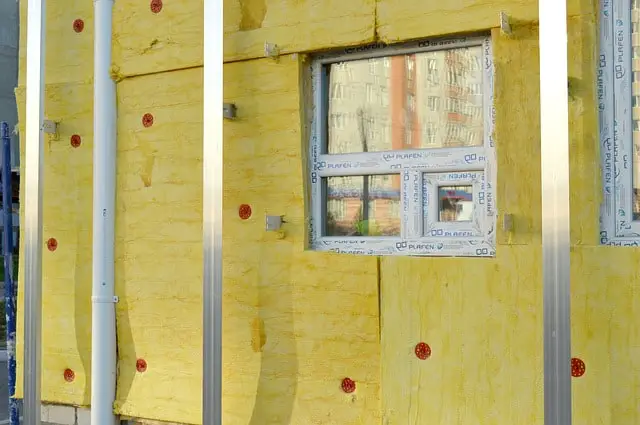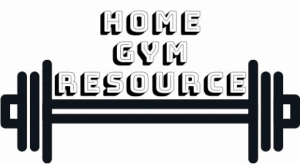Many sheds don’t have proper ventilation for working out, which can have negative effects. For normal storage, most sheds are fine but for working out, you’ll need a bit more. It’s not that hard to improve ventilation in a gym shed though. What can you do to make sure you stay fresh in your shed?
There are quite a few different things you can do to ventilate your gym shed. Which one or combination is best for you, depends on your situation. The best ways to ventilate your gym shed;
Find out which ones are best for your situation below.
Contents
Workout Shack Ventilation Goals
First, let’s take a quick look at what we’re trying to accomplish and why.
- Storage Shed vs. Workout Space
- In a storage shed, minimal ventilation is enough. However, when using it as a workout space, ventilation becomes much more important.
- The Need for Fresh Air
- You need fresh air during a workout, it’s pretty critical to your performance.
- Temperature and Humidity Control
- Ventilation plays a role in regulating temperature and humidity inside the shed.
- Depending on your location and the time of year, you may need to cool/heat up the space down or maintain humidity levels.
- Gym Environments
- In a gym setting, it’s vital to maintain a relatively cool and dry atmosphere for a comfortable workout.
- Post-workout, proper ventilation is essential. Intense exercise leads to sweating, and allowing the shed to air out is crucial for freshness.
Gym Shed Ventilation options

Notice
1. Open a Window
The simplest and most obvious thing to do to ventilate your shed is to just open a window. This will circulate some air and make a huge difference compared to sealing everything up.
However, sometimes it’s not possible or safe to leave a window open so in that case, there are some other options below.
2. Install an exhaust fan
The simplest place to start is popping in a regular exhaust fan. Ventilation boils down to giving your shed a breath of fresh air – letting the old stuff out and inviting the new stuff in. Without a fan to help suck the air out, relying solely on gaps and cracks isn’t very effective.
Even an open window won’t let nearly as much air in/out as a decent exhaust fan which makes it much better at ventilating your gym shed.
Of course, you’re dependent on the outside air but this will usually be better than not ventilating at all.
Keep in mind that while an exhaust fan may not blow you away with a breeze, if you’re after a cooler feel, you might want to add a regular floor fan into the mix. Just remember, it won’t be your air exchange hero like the exhaust fan.
3. Install a heat-exchanging fan
Probably the best option for ventilation in a colder climate is a heat-exchanging fan. They aren’t very common but they can make your shed a whole lot more comfortable. It’s one of the few ways that helps you get fresh air into your shed without losing too much heat.
This is especially useful in colder climates where every degree matters. You want fresh air but you don’t want to lose any heat. A heat-exchanging fan can do that for you.
The best and most compact option in this category is the V-Tronic HRV (amazon link). This one is pretty easily installed in any wall as long as you make a hole in that wall. It comes with a remote so you can easily change the modes. You can choose between; Intake air, exhaust air (with heat exchange), or cycle between the two.
Suggested post: Best size shed for a home gym
4. Roof vent

Roof vents come in many shapes and sizes. They are very effective in keeping some airflow going in a space without any electricity. Hot air rises to the top of a space. If there is a roof vent, the hottest air can escape which keeps the temperature and humidity under control. A properly designed roof vent doesn’t let any rain/water or other things in so it only lets air out.
The most difficult part about installing a roof vent is to get the roof to be waterproof again. This isn’t impossible but you have to get it right otherwise you’ll have a nice leak the next time it rains.
A roof vent is a very passive way of ventilating. Most roof vents don’t have an electric fan. It’s a completely natural way of getting some airflow in your shed. It doesn’t need any attention and just does its thing day in and day out.
A roof vent is plenty of ventilation for sheds where you don’t do much. Just for storage, this will be fine. However, if you’re working out in your shed, this probably won’t be enough. So combining this with another way of ventilating that moves more air is a good idea.
Roof vents are simple and cheap. It just takes some time to install. Here is a good, cheap roof vent that does exactly what it has to do. (Amazon link)
5. Trickle vents
When you’re not in the shed, you don’t want to leave your windows open. Rain or other things/people could easily get in which is something you’ll likely want to avoid.
Trickle vents or slot vents are a good solution here.
The downside is that they can’t generally be installed after the windows. It’s usually part of the window. Or installed just above a window. That means you’ll have a hard time installing this after you’ve built your shed. It’s better to install this during construction.
Slot vents or trickle vents will work best combined with an exhaust fan or roof vent. This way air can get in on one side and be pulled out on the other side.
6. Work out with the door open
Of course, the most effective solutions are the simplest. Just open the door and there will be plenty of fresh air. Since sheds are generally pretty small and have big doors there will be more than enough ventilation.
Any shed will have a door already otherwise it would be pretty useless. So just leaving it open could solve most of your ventilation issues.
The downside is of course that anything and everything can also get in. Rain, insects, and bigger animals will have no issue going inside. This isn’t usually a huge issue while working out. However, you want to keep air flowing after a workout to bring the humidity down. You’ll likely be relaxing or in the shower so the chance something or someone sneaks in during that time is pretty big.
Suggested post: Can you turn a garden shed into a home gym?
7. Consider a floor fan

Sheds aren’t usually suitable for mounting ceiling fans. Floor fans are still fine though. It really depends on how you use it if it ventilates your shed. A floor fan is great for moving air around a space or pushing fresh air in through the doorway.
Having a floor fan and the resulting airflow can cool you down pretty efficiently, especially if you’re sweaty. However, putting a fan in a closed room isn’t going to bring any new air into the room.
If you put a floor fan in an open doorway, it will push air inside. If that’s necessary depends on your situation. This will accomplish two things; push new air inside and cool you down with the airflow.
I’ve written a long post about the best quiet floor fans for your home gym. Click here to go there.
8. Air-conditioning

Obvious but not always practical in a shed. Air conditioning does a few things. It cools the air down and lowers the humidity in a space.
Both of those things are great for increasing comfort while working out. Especially in hotter climates, a/c would be awesome for a gym. Sheds aren’t always suitable for installing A/C because there is no electricity and insulation. Of course, both those things can be installed.
However, air-conditioning doesn’t bring in new air from outside. That means for heavy workouts you might want to add something else to your ventilation arsenal. Combining A/C with a roof vent or slot vents would be optimal.
9. Insulate

Insulating your shed doesn’t ventilate it. It usually does the opposite. Insulation often stops some airflow. However, if your shed is insulated properly, it might take away the need for some ventilation. The indoor temperature will stay more stable which means you need less outside air to normalize it.
Combine this with a heat-exchanging fan and you’ll have a nice temperature in your shed year-round. And if the temperature is still too high or low it’ll cost much less energy to change that.
If you’re going to install A/C, insulation is especially important or your electric bill will be pretty high.

